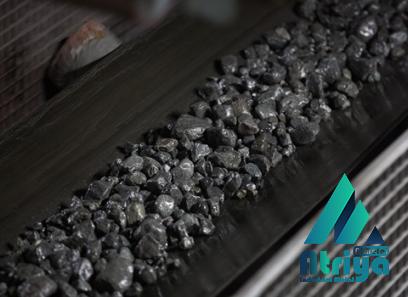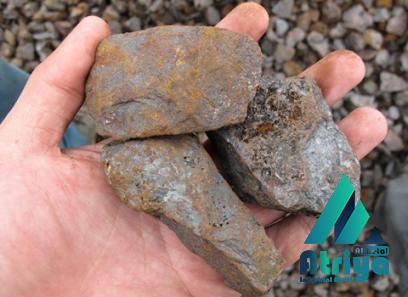A Game-Changer in the Steel Industry Steel is one of the most important materials used in various industries, ranging from automotive and construction to infrastructure and machinery. However, the traditional method of producing steel from iron ore can be both costly and environmentally harmful. To address these challenges, the steel industry has turned to a revolutionary alternative – Hot Briquetted Iron (HBI). HBI is a form of direct reduced iron (DRI) that has been compressed into briquettes. It is a high-density form of iron concentrate that can be easily transported and stored, making it an attractive option for steel producers around the world. HBI offers numerous advantages over traditional iron ore, including reduced energy consumption, lower emissions, and higher productivity. One significant advantage of HBI is its lower energy requirement during production. Unlike conventional steel production which relies on high-temperature blast furnaces, HBI can be produced using natural gas-based direct reduction processes.

.
 This significantly reduces energy consumption and, in turn, lowers the production costs for steel manufacturers. Furthermore, the use of natural gas instead of coal or coke as a reducing agent results in fewer CO2 emissions, making HBI a more environmentally friendly option. Another benefit of HBI is its higher iron content compared to traditional iron ore. HBI typically contains around 90-95% iron, while iron ores commonly have iron content ranging from 50-60%. This higher iron content translates to increased productivity for steel mills as more iron is available for steelmaking. Additionally, HBI requires less handling and processing compared to iron ore, which further streamlines the production process and reduces costs. The transport and storage of HBI also provide advantages over traditional iron ore. Due to its compressed form, HBI has a higher bulk density and reduced moisture content, enabling more efficient shipping and storage.
This significantly reduces energy consumption and, in turn, lowers the production costs for steel manufacturers. Furthermore, the use of natural gas instead of coal or coke as a reducing agent results in fewer CO2 emissions, making HBI a more environmentally friendly option. Another benefit of HBI is its higher iron content compared to traditional iron ore. HBI typically contains around 90-95% iron, while iron ores commonly have iron content ranging from 50-60%. This higher iron content translates to increased productivity for steel mills as more iron is available for steelmaking. Additionally, HBI requires less handling and processing compared to iron ore, which further streamlines the production process and reduces costs. The transport and storage of HBI also provide advantages over traditional iron ore. Due to its compressed form, HBI has a higher bulk density and reduced moisture content, enabling more efficient shipping and storage.
..
 This means that steel manufacturers can import HBI from distant sources, allowing them to diversify their supply chains and access iron ore reserves that were previously inaccessible. Moreover, the reduced moisture content of HBI ensures better quality control and eliminates the risk of contamination during transportation and storage. The growing popularity of HBI can be attributed to its versatility and compatibility with existing steelmaking technologies. HBI can be used as a feedstock in electric arc furnaces (EAF) or as a supplement to scrap in the production of high-quality steel. Its consistent chemical composition and absence of impurities make HBI an ideal raw material for specialized steel products that require precise alloying.
This means that steel manufacturers can import HBI from distant sources, allowing them to diversify their supply chains and access iron ore reserves that were previously inaccessible. Moreover, the reduced moisture content of HBI ensures better quality control and eliminates the risk of contamination during transportation and storage. The growing popularity of HBI can be attributed to its versatility and compatibility with existing steelmaking technologies. HBI can be used as a feedstock in electric arc furnaces (EAF) or as a supplement to scrap in the production of high-quality steel. Its consistent chemical composition and absence of impurities make HBI an ideal raw material for specialized steel products that require precise alloying.
…
 The use of HBI is not only beneficial for steel producers but also for countries abundant in natural gas reserves. By investing in HBI production facilities, these countries can tap into the global steel market and create new job opportunities. Furthermore, HBI can be an attractive export commodity, contributing to foreign exchange earnings and economic growth. In conclusion, the emergence of HBI as a cost-effective and environmentally friendly alternative to traditional iron ore has revolutionized the steel industry. With its higher iron content, lower energy consumption, and better shipping and storage capabilities, HBI offers numerous advantages for steel producers worldwide. As the demand for more sustainable steel production grows, HBI is poised to play a pivotal role in the future of the industry.
The use of HBI is not only beneficial for steel producers but also for countries abundant in natural gas reserves. By investing in HBI production facilities, these countries can tap into the global steel market and create new job opportunities. Furthermore, HBI can be an attractive export commodity, contributing to foreign exchange earnings and economic growth. In conclusion, the emergence of HBI as a cost-effective and environmentally friendly alternative to traditional iron ore has revolutionized the steel industry. With its higher iron content, lower energy consumption, and better shipping and storage capabilities, HBI offers numerous advantages for steel producers worldwide. As the demand for more sustainable steel production grows, HBI is poised to play a pivotal role in the future of the industry.











Your comment submitted.